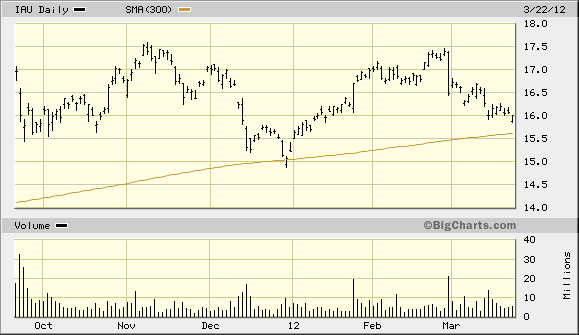When Central Banks Fail
Ben Bernanke's smiling face on the cover of the April issue of The Atlantic is a testimony to how short America's collective memory is. While the Fed chief is feted as the savior of the global economy thanks to his monetary policy genius, it's apparent how quickly many have forgotten how his sluggish response to the brewing credit storm in 2006-2007 brought the U.S. to the edge of the abyss.

A more recent example of a dilatory central bank response to a major economic crisis can be seen in the European Central Bank's (ECB) eleventh hour decision to roll out a €1 trillion rescue package for the troubled eurozone. Where was the ECB in 2010 and 2011 when such decisive action could have prevented - or at least mitigated - much of the global market volatility and European economic misery?
The problem confronting the global economy has more to do with the hyper-aggressive action of the central banks than it does their unresponsiveness to crises. What are the economic consequences of $600 billion worth of quantitative easing combines with a €1 trillion ECB bailout? In the days before interconnected economies perhaps these sums would have been relegated to the regions in question. But today, rash monetary policy action has global repercussions.
Indeed, we're already seeing the unintended results of this liquidity explosion. Although so-called "core" inflation remains muted in the U.S. and other developed nations, retail food and fuel prices are rising globally and have led to major social and economic problems in less developed countries in the Middle East. Especially hard hit by this aspect of price inflation are the elderly and the poor.
As the writer of Ecclesiastes tells us, "money answereth all things," so there is a basis for believing that artificial money creation by central banks can at least temporarily ameliorate debt crises. The problem is that is that money and credit should enter the economy through normal channels without creating imbalances. The only way this can happen is if the money is backed by a nation's productivity. Production is the ultimate money standard and with insufficient demand for money arising from diminished production, it follows that excess liquidity will flow into less productive channels. Stock and commodity speculation are among the biggest such liquidity traps today and are clearly benefiting from the recent liquidity creation of the central banks.
Oil and gasoline prices may yet prove to be the Achilles Heel of the U.S. recovery, however. It would indeed be ironic if a commodity (oil) for which there is ample domestic supply and decreased demand should prove to be the undoing of the central bank's efforts at resuscitating the economy. The Fed's dual mandate involves maintaining optimal levels of employment and promoting price stability. By "price stability" Chairman Bernanke has made clear he means to fight deflation with every monetary policy weapon at his disposal.
Deflation (falling prices) is the free market's way of internally cleansing itself after a sustained bout of inflation (rising prices). The old saying that "price cures price" sums it up nicely. Whenever prices for goods are bid too high by the free market, buyers pull back and price eventually falls to a level the market will bear. When price isn't allowed to fall to its natural level and central banks insist on artificially boosting prices to prevent natural deflation, the market never fully works out its excesses and becomes even more imbalanced as prices rise every higher without properly "correcting." At some point along this artificial continuum, a crash becomes inevitable.
Just as periodic sickness is nature's way of purging the body, bear markets are the market's way of purging excesses that have built up along the way. The problem we face today is that the Fed never allowed sufficient time for the market to "cure" high retail good prices before it acted to stimulate the economy in 2009 and beyond. Chairman Bernanke betrayed an anti- free market bias when he told The Atlantic that "there is still scope for policy to ameliorate the effects of necessary rebalancing on the public, to help shorten the recession….where you can, you try to short-circuit the process."
By not letter financial nature take its course artificial pressures continue to build within the monetary system. If the U.S. had not been insistent on avoiding the day of reckoning so that it could bailout the big banks, all that bailout money could have been used to directly stimulate the U.S. economy. Instead, the Fed chose to repair the elite's balance sheet so the banks wouldn't have to face the music.
The big banks are now flush with liquidity while the underlying trend is deflationary. This is the very definition of the inefficient use of capital. As someone has said, we normally see such travesties in state capitalism: China gets empty cities and buildings; we get banks with state-repaired balance sheets.
Another danger inherent within central bank engineered bailouts is that while monetary stimulus can cushion the worst of the impacts of a crisis, eventually conventional monetary policy reaches its limits and fiscal stimulus turns, sometimes prematurely, to austerity. As The Economist recently observed, "Federal stimulus is steadily giving way to restraint. More drastic tightening looms at the end of the year if George Bush's tax cuts, already extended, expire, and a 'sequester' automatically slashes federal outlays."
As the U.S. economy has the appearance of a recovery underway, the pressure is already off the Fed to commence another round of quantitative easing. Central banks tend to consistently underestimate the severity of the long-term deflationary trend which has been exposed since the housing market crashed. It only takes a few months of central bank inaction for deflation to rear its ugly head again as we've seen already since 2009 (viz. the eurozone debt crisis and more recently China's slowing economy). We've likely not seen an end to these periodic crises that will only intensify as we head closer to 2014.
Until the deflationary 120-year Kress cycle bottoms in 2014 there will be strong deflationary pressures in all the world's developed nations and especially in the U.S. If history teaches us any lesson it's that the world's central banks will prove unequal to the task of staying ahead of the deflationary wave still to come.
Gold ETF
The iShares Gold Trust (IAU, 16.01), our proxy for gold, has been under selling pressure in the weeks since its Feb. 29 sell-off and made a slightly lower low on Thursday, Mar. 22. As we observed in last week's commentary, IAU now looks like it may test the critical 60-week (300-day) moving average shown in the chart below. The 60-week moving average has turned back declines in the past, including most recently November-December 2011 correction.

IAU needs to show us that it has bottomed, which it can do in the next few days by re-establishing support above the technically significant 60-week MA, which intersects at approximately the 15.60 level in the daily chart.
Gold & Gold Stock Trading Simplified
The methods revealed in "Gold & Gold Stock Trading Simplified" are the product of several year's worth of writing, research and real time market trading/testing. It also contains the benefit of my 14 years worth of experience as a professional in the precious metals and PM mining share sector. The trading techniques discussed in the book have been carefully calibrated to match today's fast moving and volatile market environment. You won't find a more timely and useful book than this for capturing profits in today's gold and gold stock market.
The book is now available for sale at:
www.clifdroke.com/books/trading_simplified.html
Order today to receive your autographed copy and a FREE 1-month trial subscription to the Gold & Silver Stock Report newsletter. Published twice each week, the newsletter uses the method described in this book for making profitable trades among the actively traded gold mining shares.
Clif Droke is the editor of Gold & Silver Stock Report, published each Tuesday and Thursday. He is also the author of numerous books, including most recently, "Gold & Gold Stock Trading Simplified." For more information visit www.clifdroke.com
















